
List of Insurance Companies in Angola – World Insurance Companies Logos.
Click on the insurer logos to get a lot of current information about each insurer. We would like to help you find the best insurance online.
List of Insurance Companies Logos And Names in Angola
List of Insurance Companies Logos And Names in Angola. The graphic mark of any Companies in the World is synonymous with its brand. A logo is instantly recognizable and allows the customer to associate the company with the useful qualities such as trust, the right price and many other vital issues about finding the best insurance.
- All
Find more Insurance company Logos at insurance in Africa
Ensa Seguros
ENSA. Is the main insurance company in this country.
It was created in 1978 as Empresa Nacional de Seguros e Resseguros de Angola as U.E.E., (Unidad Economica Estatal) but was later converted into a joint-stock company.
ENSA is a holding with two operating companies ENSA S.A., as an insurance company, and ENSA RE SA as reinsurance company. ENSA also holds participations in a number of other industries. ENSA employs 700 people, 40% among them female. ENSA works thru 30 branch offices of their own and sells their services also via 54 counters in post offices, one bank counter.
ENSA’s call center can deal with 1000 clients in one 8-hour work shift. ENSA claims to hold more than 50% of the Angolan insurance market.
From Wikipedia
Health in Angola – The World Health Organization (WHO)
Luanda. Held on June 16 2022, the first National Forum on Immunization and Primary Health Care, reaffirming the strategic importance of immunization as a platform to accelerate the provision of integrated, equitable and sustainable services, and guarantee universal coverage of healing.
In recent years, the country has made significant investments in the health sector, with emphasis on increasing the workforce, improving health infrastructure and reinforcing the capacity to respond to public health emergencies, including vaccination against Covid19 .
However, there are still several challenges to achieve universal health coverage and the Sustainable Development Goals, in particular not that it says respect to routine vaccination coverage, years still high levels of malaria, diarrheal diseases, pneumonia, acute malnutrition, tuberculosis, and the increase in non-transmissive chronicles. This situation worries the local authorities and their partners and encourages them to speed up the implementation of strategic initiatives to promote access to efficient and quality health services.
The World Health Organization (WHO) defends that the reinforcement of the Primary Health Care system, together with strong training and community participation, are the cornerstones for the realization of Universal Health Coverage and two Sustainable Development Goals (SDGs). ) related to health. To achieve this desire, the Angolan authorities and their partners approved the “Declaration of Luanda on Primary Health Care and Immunization “, which among several actions determines or increases in a sustainable way equitable financing for health in all three levels of national services, of health, with a focus on primary health care.
List of Insurance Companies in Angola – World Insurance Companies Logos
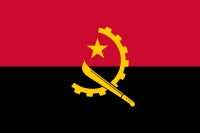


 UAE, Asia – World Insurance Companies Logos. Click on the insurance company logos to get a lot of up-to-date information from each insurer in the United Arab Emirates. We want to help you find the best coverage on the Internet.
UAE, Asia – World Insurance Companies Logos. Click on the insurance company logos to get a lot of up-to-date information from each insurer in the United Arab Emirates. We want to help you find the best coverage on the Internet. 
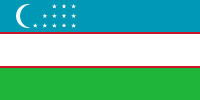
 Uzbekistan, Asia – World Insurance Companies Logos. Click on the insurance company logos to get a bunch of up-to-date information from every insurer. We want to help you find the best coverage on the Internet.
Uzbekistan, Asia – World Insurance Companies Logos. Click on the insurance company logos to get a bunch of up-to-date information from every insurer. We want to help you find the best coverage on the Internet. 
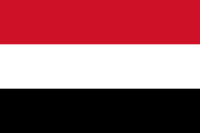
 List of Insurance Companies logos and Names in Yemen – World Insurance Companies Logos. Click on the insurance company logos for a bunch of updated information offering to every insurer. We would like to help you find the best coverage online.
List of Insurance Companies logos and Names in Yemen – World Insurance Companies Logos. Click on the insurance company logos for a bunch of updated information offering to every insurer. We would like to help you find the best coverage online. 

 List of Insurance Companies Logos and Names in Turkmenistan – World Insurance Companies Logos. Click on the insurance company logos to get a lot of up-to-date information from insurers in Turkmenistan. We want to help you to find the best coverage on the Internet.
List of Insurance Companies Logos and Names in Turkmenistan – World Insurance Companies Logos. Click on the insurance company logos to get a lot of up-to-date information from insurers in Turkmenistan. We want to help you to find the best coverage on the Internet. 
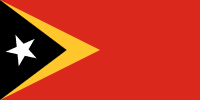
 List of Insurance Companies Logos and Name in East Timor – World insurance companies logos. Click on the insurance company logos to get a bunch of up-to-date information offered to every insurer. We want to help you to find the best insurance on the Internet.
List of Insurance Companies Logos and Name in East Timor – World insurance companies logos. Click on the insurance company logos to get a bunch of up-to-date information offered to every insurer. We want to help you to find the best insurance on the Internet. 

 Thailand Insurance – World Insurance Companies Logos. List of Insurance Companies in Thailand. Click on each logo to get a lot of essential information to choose the best coverage.
Thailand Insurance – World Insurance Companies Logos. List of Insurance Companies in Thailand. Click on each logo to get a lot of essential information to choose the best coverage.
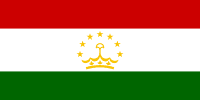
 List of Insurance Companies Logos and Names in Tajikistan, Asia – World Insurance Companies Logos. Click on the insurance company logos to get a lot of updated information offering to each insurer.
List of Insurance Companies Logos and Names in Tajikistan, Asia – World Insurance Companies Logos. Click on the insurance company logos to get a lot of updated information offering to each insurer.
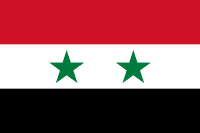
 Syria Insurance – World Insurance Companies Logos.
Syria Insurance – World Insurance Companies Logos. 

 Sri Lanka, Asia – World Insurance Companies Logos. Click on the insurance company logos for a bunch of updated information offering to every insurer. We want to help you to find the best Insurance in the Internet
Sri Lanka, Asia – World Insurance Companies Logos. Click on the insurance company logos for a bunch of updated information offering to every insurer. We want to help you to find the best Insurance in the Internet 